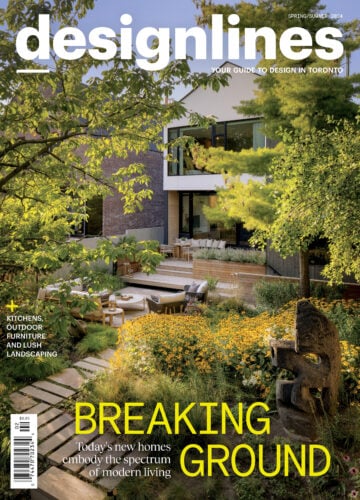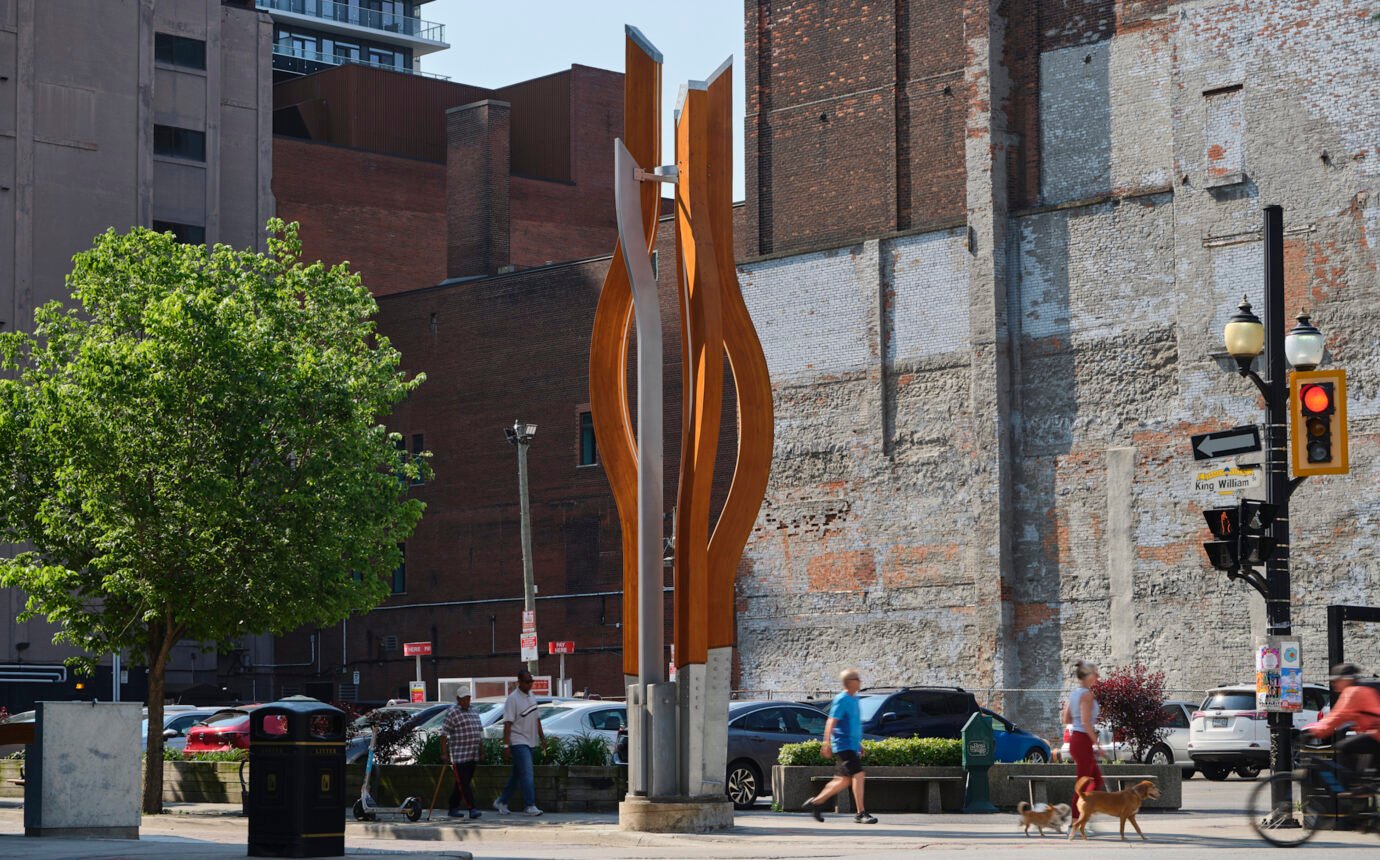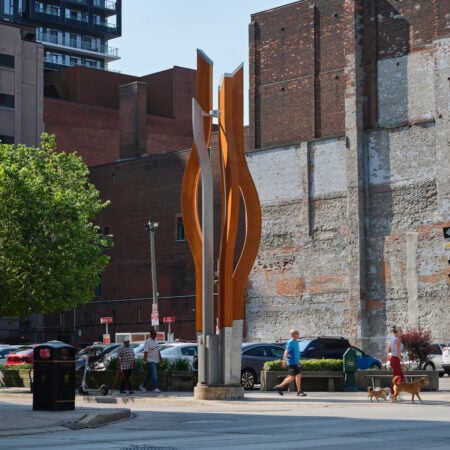Biidaasige Park Is a Triumph
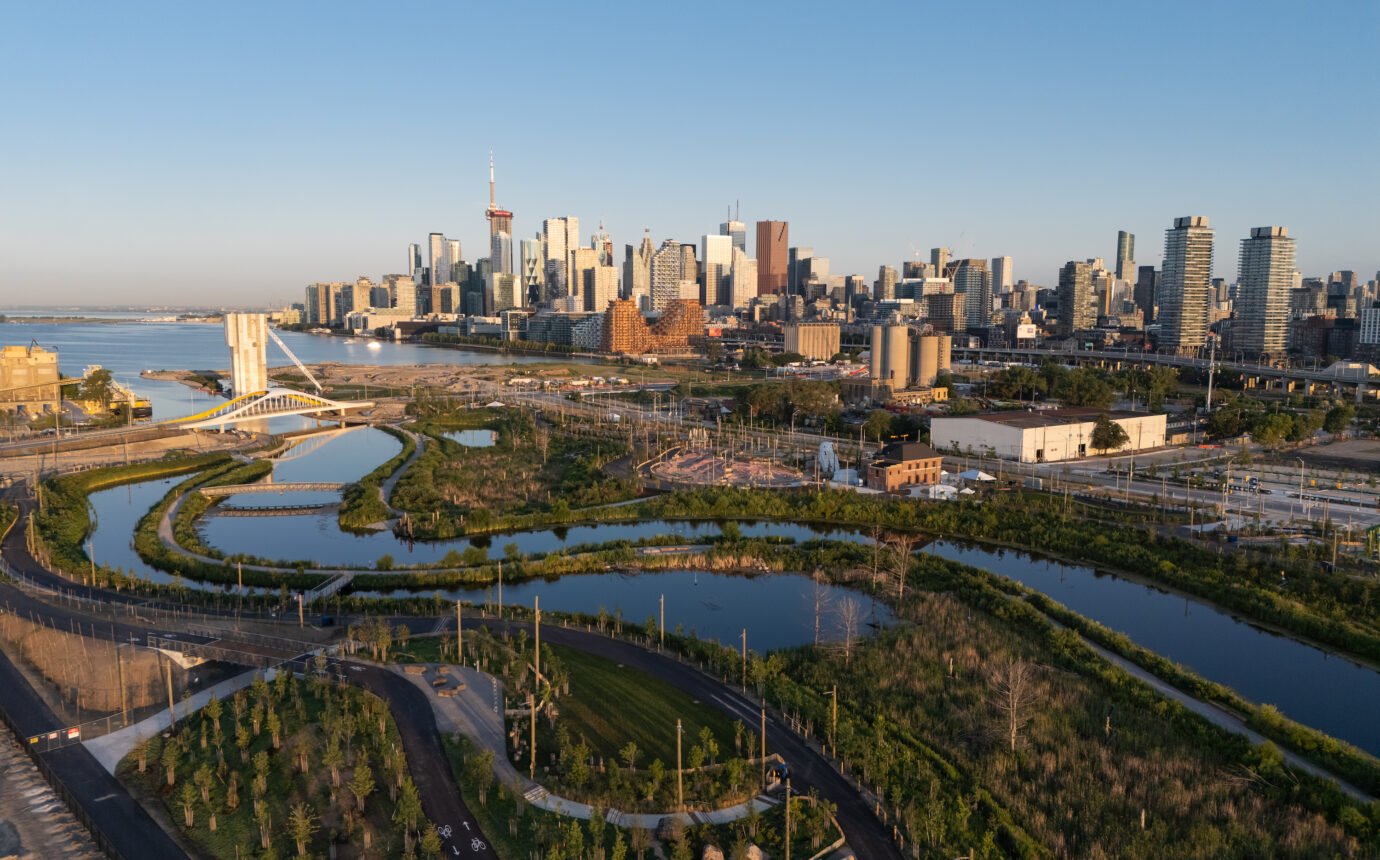
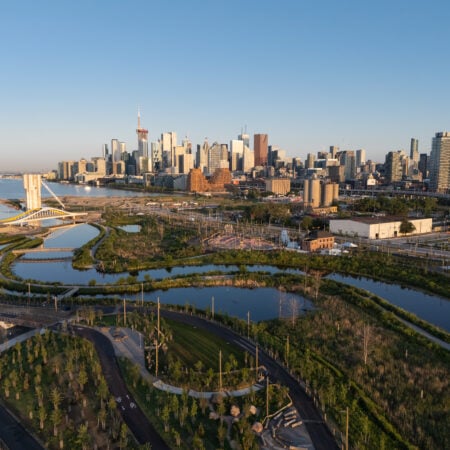
And a win for children in the war against fun
To write about urbanism in Toronto is to live in a constant state of disappointment. It’s not that good things never happen here. It’s just that, too often, our big-ticket urban projects fail to live up to the hype. We get promised a radical new addition to the public realm—a bold initiative to reimagine civic life—and we end up with a condo complex or an outdoor mall. A starchitect gets hired to re-design our most storied museum, and he makes such a hash of things that, fifteen years later, we find ourselves paying to undo his work.
In late August, I visited the playground at Biidaasige, the newly opened park at the mouth of the Don River, bracing myself for the usual sense of letdown. It didn’t happen. If the normal Toronto MO is to overpromise and underdeliver, the team behind Biidaasige has done the opposite. The playground—part of a larger, more expansive redesign of the Port Lands—is, in its quiet way, a game changer. It does things I didn’t think were possible anymore. Also, my toddler loved it.
Biidaasige Park is the latest chapter in a longer story, which begins with a historic mistake. The Don River has always flowed southward. In the early 20th century, developers rebuilt the river mouth, replacing a marshy delta with an industrial canal—the Keating Channel—that turns westward at a right angle before emptying into Lake Ontario. The intervention would prove disastrous for the city. During storm events, the Don waters would hit against the southern wall of the channel, then backflow up the river, quickly overrunning its banks. Something had to be done.
In 2007, Waterfront Toronto, tasked with revitalizing the Port Lands, put out an RFP for flood protection at the Don mouth. Michael Van Valkenburgh and Associates Inc., the U.S. firm behind Brooklyn Bridge Park, submitted an unusual proposal, with no floodplains, no barriers and remarkably little hardscape. “We asked ourselves, Where does the Don want to go?” says Herb Sweeney, a principal at the firm. By this, he means, What would the river mouth look like if it hadn’t been ruined a century earlier?
The plan was to recreate the Don River delta, just south of the Keating Channel, with soft, meandering embankments. The rejuvenated delta would take pressure off the channel, and the natural landscape would absorb floodwaters. A happy byproduct of this intervention would be the creation of an island, Ookwemin Minising, bounded by the channel, the revitalized river mouth, and the lake itself. MVVA’s proposal won the competition.
Since then, the transformation has been slow but thoroughgoing. Once an industrial wasteland, Ookwemin Minising is now safe for human habitation, thanks to decontamination and the re-naturalized Don. Eagles, turtles, snowy owls and red-tailed hawks have moved in. Eventually, humans may too: the island is expected to have 9,000 homes on it. But first, Waterfront Toronto and MVVA created a park. “Social infrastructure is just as important as floodwater protection,” says MVVA partner Emily Mueller De Celis.
Understood properly, Biidaasige is an experiment in placemaking. The island park has riverfront scrambles and a winding promenade. Next year, we’ll see an infusion of public art, including a sculptural installation by Kent Monkman. An event space and canoe cove are in the works as well. The playground is this year’s addition.
And it’s a welcome one, given the depressing state of children’s play in the city. Is it paranoid to say that, over the last 40 years, Canadian kids have been the target of an anti-play conspiracy? It’s not as much of an exaggeration as you’d think. Research by Mariana Brussoni, a professor of public health at the University of British Columbia, has revealed a legacy of regulatory capture at the Canadian Standards Association. The CSA’s playground-safety committee, she says, has been populated by executives at leading equipment manufacturers, who have an interest in burdensome regulations, which make life hard for their competitors and narrow the market.
And so we’ve gotten the formulaic playgrounds of today, which feel like minor variations on the same boring theme. “If the design for children in the ’60s and ’70s had been full of possibility and experimentation,” writes the journalist Nicholas Hune-Brown, “the prevailing mood in the 1980s was caution… The adventure playgrounds that once dotted North America were shuttered. The massive wooden jungle gyms in schoolyards were replaced with modest climbing structures.”
Improbably, Biidaasige Park feels like a return to an older, livelier era in children’s play. Instead of relying on catalogue orders, Waterfront Toronto and MVVA sourced custom pieces from four different manufacturers. They designed the park playground with a sense of variety and a touch of the surreal. There are balance beams, sway alleys and zip lines. There’s an inverted forest, consisting of baby white-oak trees planted upside down, with climbing ledges carved into the trunks. There’s a set of concrete moguls modelled on the Cheltenham Badlands, interspersed with gullies, in which water flows from a hand-operated system of pumps and dams—the operators are mostly kids, who take up the job spontaneously in groups. There’s a play structure shaped like a giant raccoon, which I somehow missed (Biidaasige is big) and another shaped like a snowy owl, which I couldn’t possibly have missed.
From a design perspective, there are two key principles here that are worth emphasizing. The first is that, when it comes to placemaking, ambition and originality matter. It’s easy to gather corporate partners and celebrity chefs to create branded spaces—food halls, novelty boutiques, ticketed immersive art “experiences.” Easy, and also uninspired. If retail amenities were all a city needed to achieve greatness, Toronto would already rank among the greatest cities on Earth.
Toronto’s culture of design conservatism sucks for everyone. But it sucks the most for children.
Which brings me to the second major principle: young people need adventures. When discussing Biidaasige Park with me, Shannon Baker, a project director at Waterfront Toronto, distinguished between dangerous and risky play. The former comes with a real possibility of death or injury. The latter is basically safe, albeit at times destabilizing, challenging and unfamiliar—all things playgrounds used to be.
My daughter’s favourite features at Biidaasige Park were the badlands, on which she had a minor fall, and the owl, which she explored on her own. At one point, I heard her crying in distress, so I ran inside the owl to find her stranded on a ledge, roughly where the gizzard would be. No sooner had I helped her down, than she was off again, climbing happily to the top of the owl to survey the view from its massive eyes: the lake, the skyline, the revitalized river.
